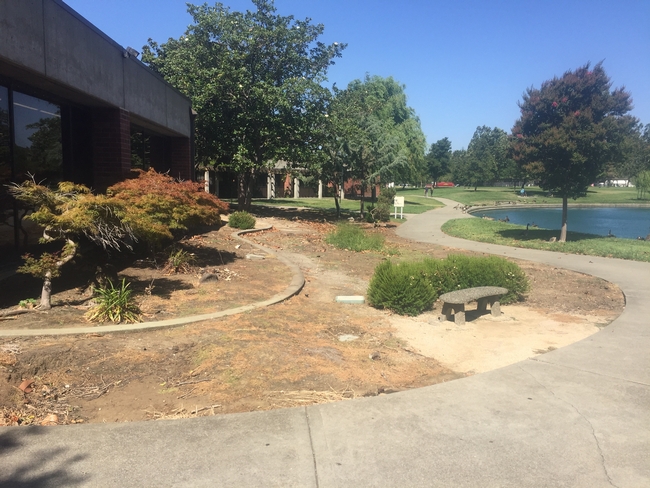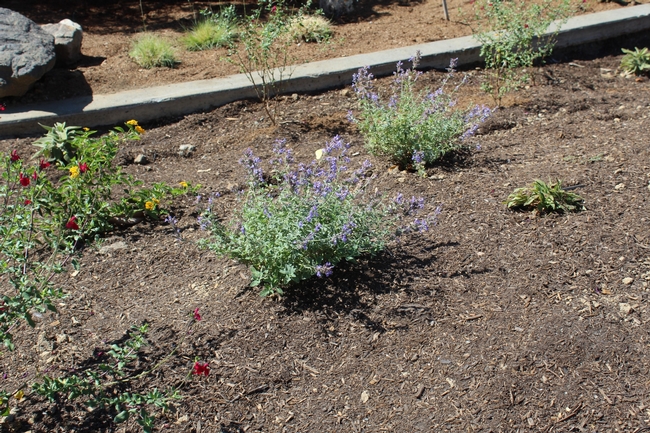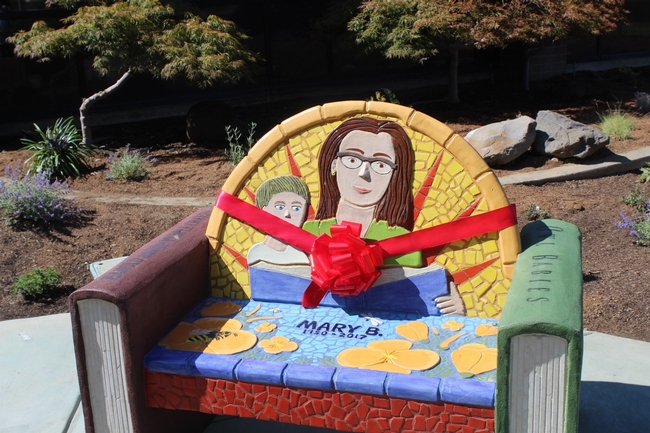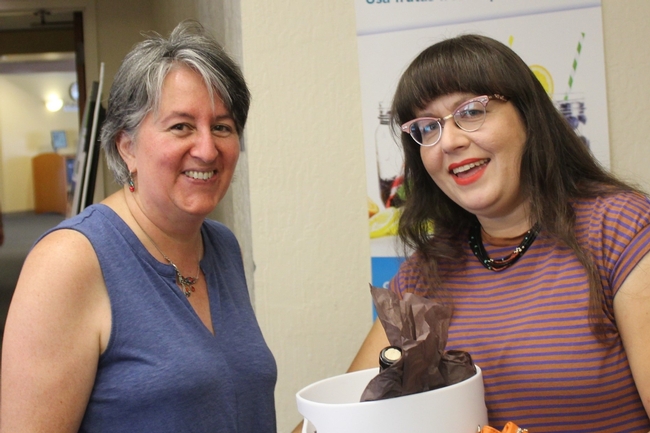UC Gardening Blogs
Salt and Pepper Cucumber
Recalling that ancient folklore saying — “cool as a cucumber” — I now wonder if there's some truth to it. Supposedly, science confirmed in 1970 that air temperature is 20 degrees cooler inside a cucumber field. All I know for sure is that one scalding hot July afternoon I picked and brought inside a couple handfuls of my harvest, rather surprised they weren't boiled to a mush but actually were quite cool to the touch of my very warm hand.
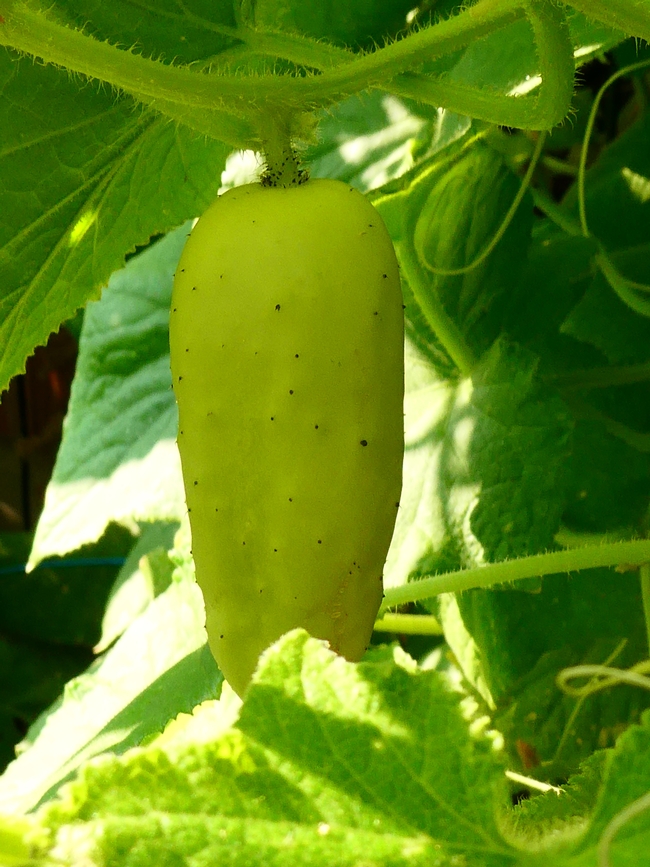
photos by Launa Herrmann
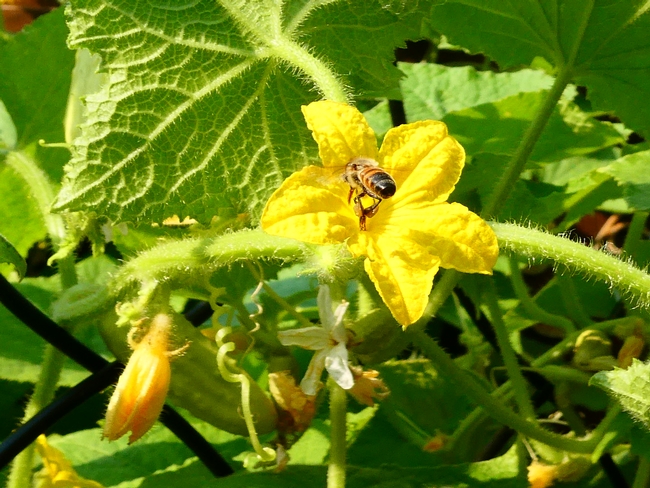
S&P 2
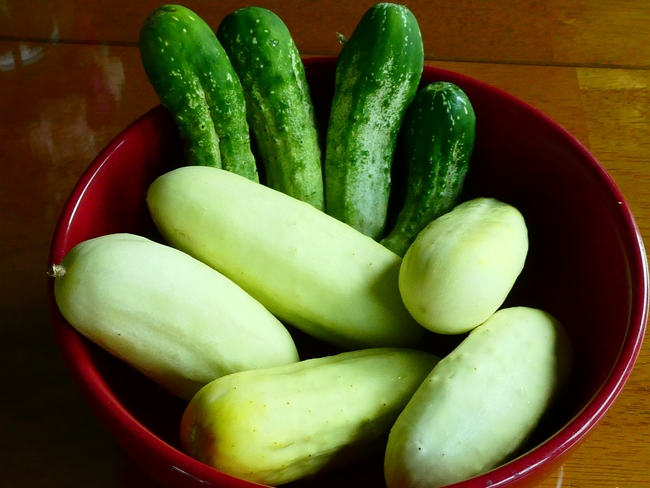
S&P 3
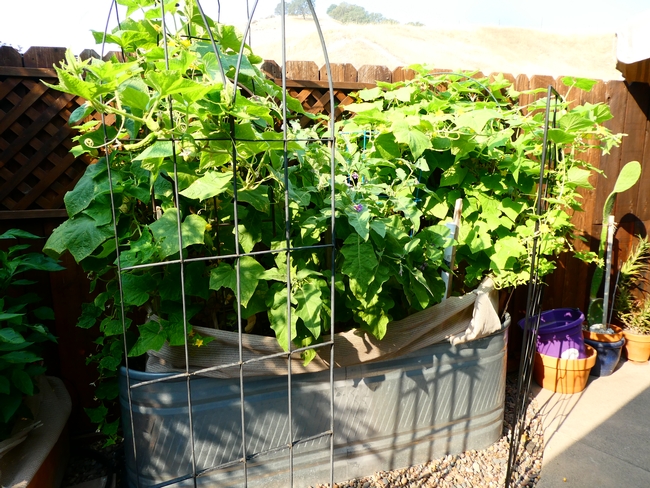
S&P 4
Meet Some Crafty Insects at Bohart Museum of Entomology
Talk about "crafty"--as in cunning or sneaky--insects. Ever seen a praying mantis ambushing a...
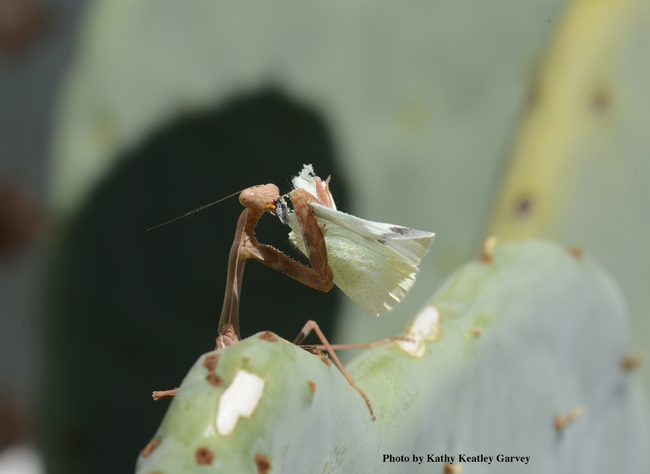
A praying mantis dining on a cabbage white butterfly. (Photo by Kathy Keatley Garvey)
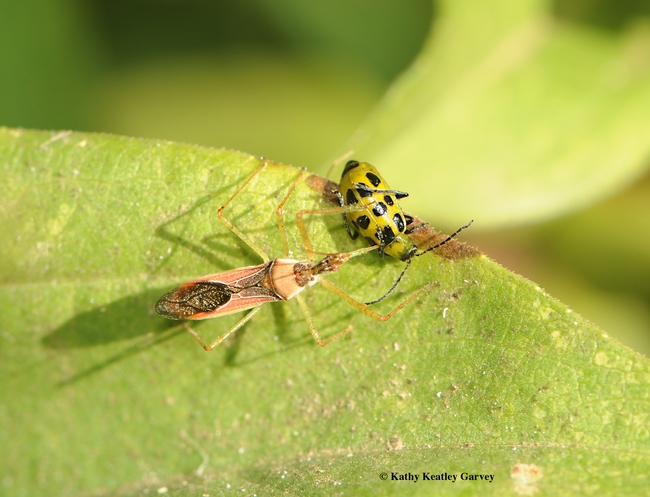
An assassin bug targeting prey: a spotted cucumber beetle. (Photo by Kathy Keatley Garvey)
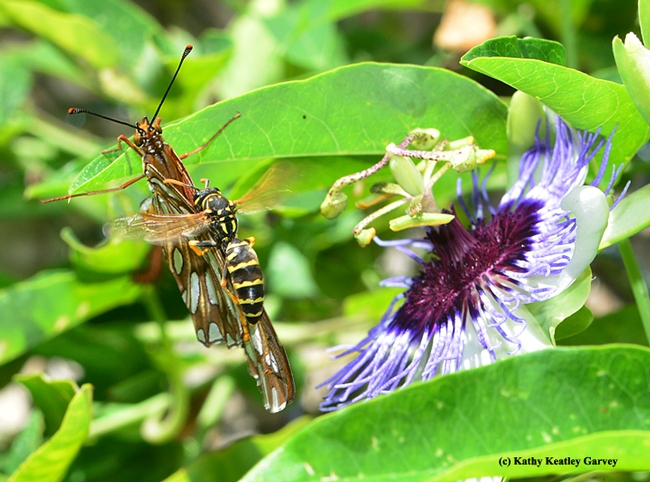
European paper wasps attacking a newly eclosed Gulf Fritillary butterfly. (Photo by Kathy Keatley Garvey)
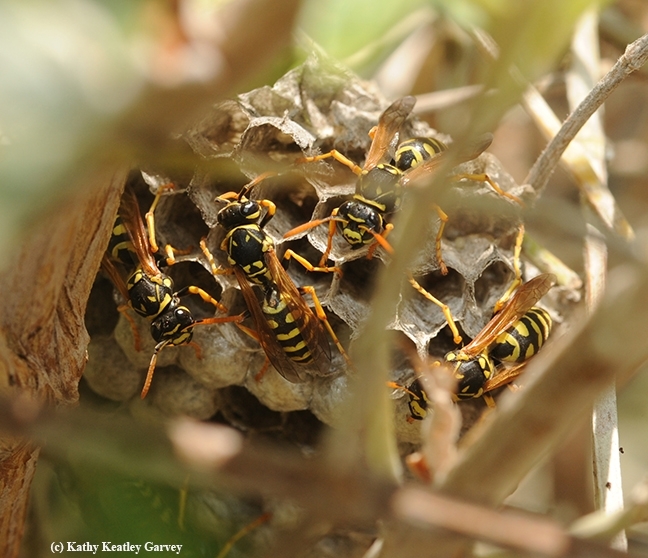
These "crafty" European paper wasps are making their nest. (Photo by Kathy Keatley Garvey)
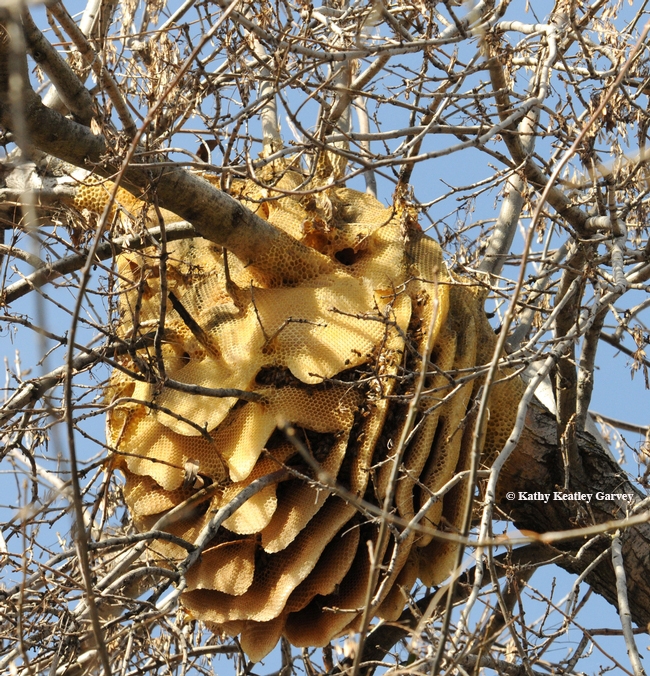
A feral honey bee colony is a work of art. (Photo by Kathy Keatley Garvey)
Mosquitoes in Garden Centers
This article was written for the UC IPM Retail Nursery and Garden Center News, a publication...
It Takes a Village-New Sensory Garden Dedicated at Fairfield Library
On Saturday, August 11th a New Sensory Garden and a bench in honor of Mary Bourguignon were dedicated at the Fairfield Civic Center Library on Kentucky Street.
Mary Bourguignon was a lifetime community activist and Fairfield library supporter. The bench is dedicated in her honor and features herself reading a favorite book to her son. Directly across the bench is a plaque honoring Mary B.
The sensory garden was the brainchild of supervising librarian Serena Enger and Teresa Lavell a literacy program assistant. The garden started off with a $1,000 staff innovation grant quickly followed by a $7,028 grant from the Solano Community Foundation. The grants were just the beginning as Serena and Teresa worked endlessly soliciting in-kind funds, materials, and labor from various community sources. Within 14 months the vision of a sensory garden, that vision became a reality with the first shovel of dirt being overturned by volunteer labor from the Master Gardeners (MG) of Solano County. Teresa Lavell herself a Master Gardener asked Jennifer Baumbach, program coordinator of UC Master Gardeners of Solano and Yolo Counties, to ask for volunteer help on the UCCE Master Gardener-Solano website.
The MGs who contributed their time were: Teresa Lavell, Jennifer Baumbach, Brenda Altman, Benita Brittain, Mollie Jarret, Amy Mason, Karen Metz, Kristina Moore, Sherry Richards, Melissa Sandoval, Kathy Tomko, and Beth Wells. The digging wasn't easy, the soil consisted of hard clay and rock but the group was able to plant over 80 plants in two-morning plantings. Follow up volunteer work on successive days included irrigation installation done by Teresa. A weeding and mulching party days before the Saturday dedication completed the garden. One library patron Ryan saw our mulch party and joined right in, he a grabbed a wheelbarrow and distributed mulch around the site, thank you, Ryan. Overall the MGs contributed about 60 hours of labor. It truly took a village to make this garden a reality.
Many thanks to the Landscape Architect Aimee Ruskewicz who donated her time and expertise to the planning of the garden. Her blueprints were easy to follow.
Thanks, are also in order to: Mija Berg (a former MG and owner of the Ranch Motel) who donated a truckload of compost, and Lemuria Nursery in Dixon who provided the plants at cost.
Wait there's more! Coming soon tree rounds that have been donated by MG Sterling Smith will be installed as seats for the story time area. The library is hoping to add signage and an information board to update visitors to look for in the garden as it develops.
The garden as it develops and grows will incorporate all the five human senses except for taste. The lambs' ear gets my vote for touch!
If you haven't seen the garden drop by next time you visit the library. In six months, the landscape will change as the plants mature and flower. Come springtime next year, take time to smell the flowers and touch the lambs' ear. Several local bees have already tasted the nectar and they give it two antennae up!
Beth Shedden commenting on the initial grant thanked the Solano Community Foundation, “We appreciate partners like the Solano Community Foundation who support our mission of literacy and lifelong learning. This is a gift that will keep giving to Fairfield families for years to come.”
This is your garden come by and enjoy it!
Garden site before bench and plantings!
Garden after planting
Mary B's Bench
Teresa Lavell presents a thank you gift to Landscape Architect Aimee Ruskewicz
MGs at the dedication
Valley Carpenter Bees: Drama in the Garden
Some folks call them "bumble bees," but they're not. In size, the female Valley carpenter bee...
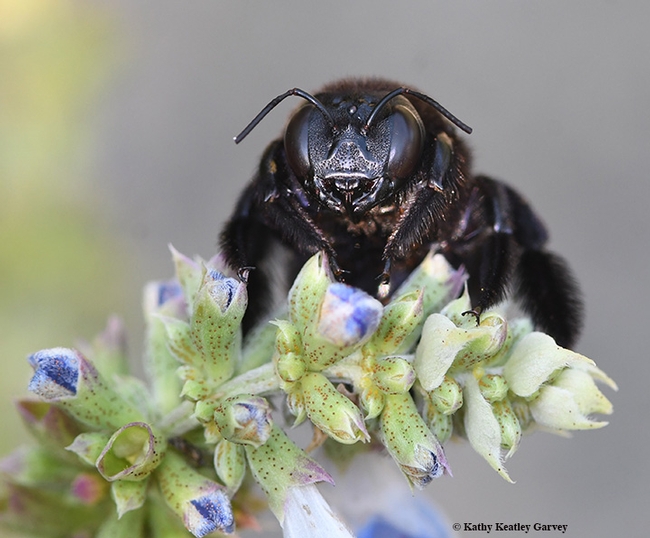
Don't bug me, I'm trying to wake up. This female Valley carpenter bee, Xylocopa varipuncta, peers over a blue spike salvia (Salvia uliginosa) blossom. (Photo by Kathy Keatley Garvey)
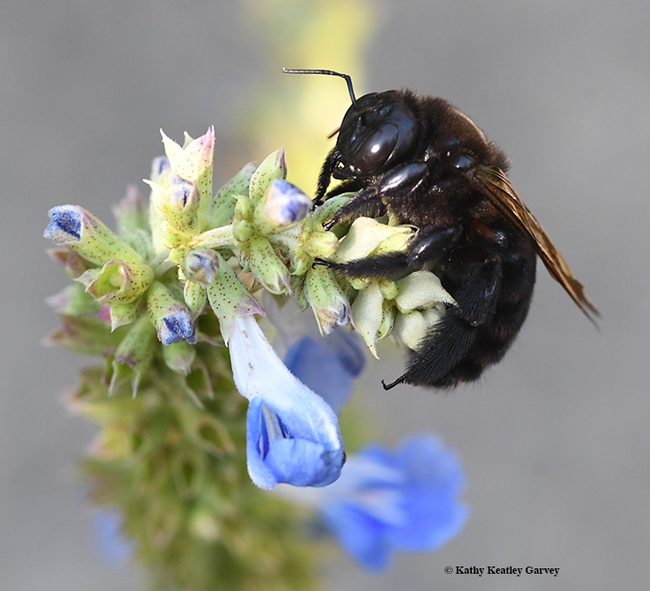
The female Valley carpenter bee sips nectar from a blue spike salvia, Salvia uliginosa. (Photo by Kathy Keatley Garvey)
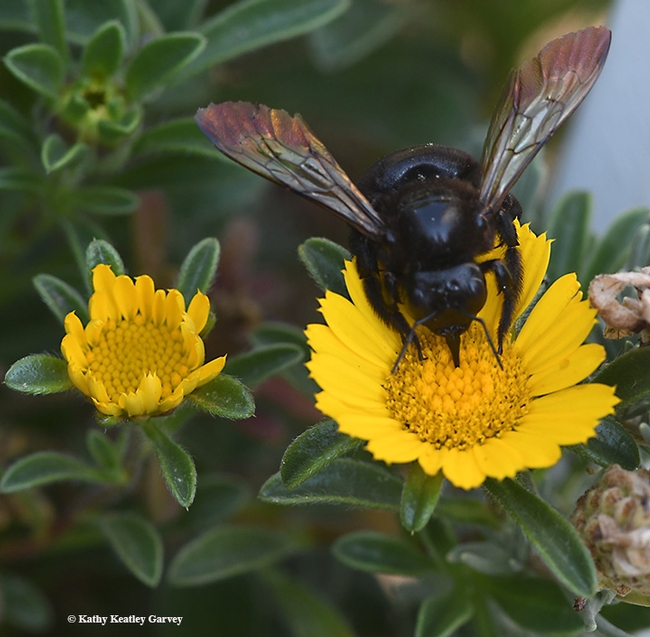
The metallic wings of the female Valley carpenter bee gleam in the sun as she sips nectar from gold coin, Asteriscus maritimus. (Photo by Kathy Keatley Garvey)
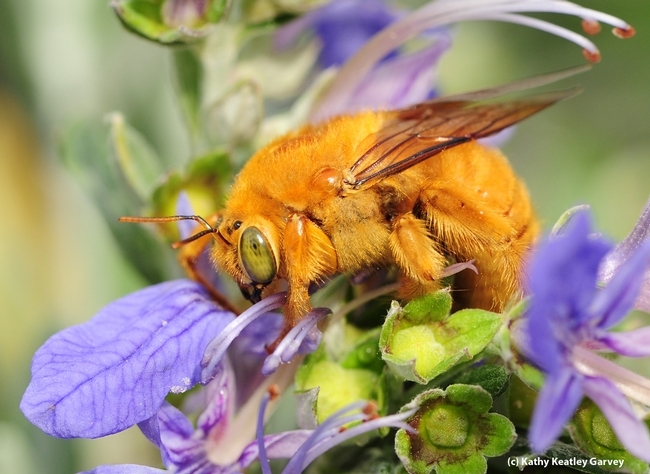
This is the male Valley carpenter, Xylocopa varipuncta, bee on germander. (Photo by Kathy Keatley Garvey)




